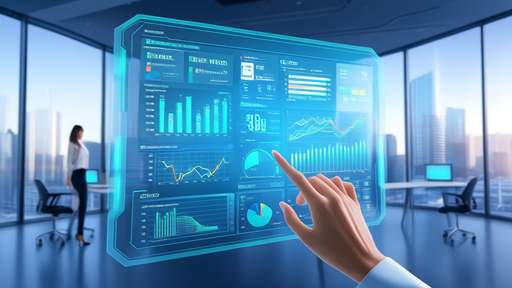The world of live-streaming e-commerce has revolutionized the way consumers shop, blending entertainment, immediacy, and the thrill of real-time interaction. At the heart of this phenomenon lies a fascinating psychological trigger: the impulse purchase threshold. Unlike traditional online shopping, where decisions are often deliberate and researched, live commerce thrives on spontaneity. The question is—what exactly pushes a viewer from casual browsing to clicking "buy now" in a matter of seconds?
Research suggests that the impulse purchase threshold isn’t a fixed point but a fluid boundary influenced by a cocktail of factors. The charisma of the host, the perceived scarcity of the product, and the social proof of seeing others purchase in real-time all play critical roles. When these elements align, hesitation evaporates. Viewers aren’t just buying a product; they’re buying into an experience, a fleeting moment of connection that feels too urgent to miss.
The role of the host cannot be overstated. A skilled live-streamer doesn’t just showcase items; they perform. Their tone, energy, and ability to create a sense of intimacy turn a sales pitch into a shared event. When a host says, "This deal disappears in 10 minutes," or "Only three items left at this price," they’re not just sharing information—they’re activating a fear of missing out (FOMO). This psychological lever is incredibly effective at lowering the impulse threshold, pushing viewers to act before rationality kicks in.
Scarcity tactics are another cornerstone of live commerce’s success. Limited-time offers, flash sales, and exclusive bundles create a sense of urgency that’s hard to resist. The brain processes scarcity as a threat to opportunity, triggering a primal response to secure the item before it’s gone. This is why countdown timers and real-time inventory updates are so prevalent—they’re visual cues that amplify the pressure to buy now rather than later.
Social proof amplifies this effect. Live chats filled with comments like "Just bought!" or "This is amazing!" act as digital peer pressure. When consumers see others making quick purchases, it validates their own impulse. The herd mentality takes over, and the threshold for spending drops significantly. Platforms often highlight the number of concurrent purchases or display a running tally of sold items, further fueling the bandwagon effect.
But what about the products themselves? Not all items are equally susceptible to impulse buys. Low-to-mid-priced products with high perceived value tend to dominate. A $20 skincare set with a "50% off for the next 5 minutes" tagline is far more likely to trigger an impulse purchase than a $500 appliance, no matter how compelling the host. The financial risk feels minimal, and the emotional payoff—snagging a great deal—feels immediate.
The design of the live-streaming platform also plays a subtle but powerful role. One-click purchasing, minimal checkout steps, and integrated payment systems remove friction. The fewer barriers between desire and ownership, the easier it is to cross that impulse threshold. Some platforms even offer "buy now, pay later" options, which psychologically distance the pain of payment from the joy of acquisition.
Interestingly, cultural factors influence impulse thresholds as well. In markets where live commerce is deeply embedded, like China, consumers have been conditioned to expect and embrace impulsive buying during streams. In Western markets, where the trend is still growing, the threshold might be slightly higher, but the underlying mechanics remain the same. As platforms refine their strategies, these regional differences are likely to narrow.
For brands and sellers, understanding the impulse threshold is golden. It’s not about manipulating consumers but about creating an environment where spontaneity feels natural and rewarding. The best live commerce experiences don’t feel like sales pitches—they feel like unmissable events where the audience is part of the action. When done right, the line between "I want this" and "I bought this" becomes vanishingly thin.
The future of live-stream shopping will likely see even more sophisticated triggers. Augmented reality try-ons, AI-driven personalized offers, and interactive games that reward purchases could further lower impulse thresholds. But the core principle will remain: in the heat of the moment, when excitement peaks and hesitation fades, that’s when the magic happens. And for millions of consumers worldwide, that magic is irresistibly addictive.

By /Jun 3, 2025

By /Jun 3, 2025

By /Jun 3, 2025

By /Jun 3, 2025

By /Jun 3, 2025

By /Jun 3, 2025

By /Jun 3, 2025

By /Jun 3, 2025

By /Jun 3, 2025

By /Jun 3, 2025

By /Jun 3, 2025

By /Jun 3, 2025

By /Jun 3, 2025

By /Jun 3, 2025

By /Jun 3, 2025

By /Jun 3, 2025

By /Jun 3, 2025

By /Jun 3, 2025

By /Jun 3, 2025

By /Jun 3, 2025